By Nick Rains
I was recently fortunate enough to get my hands on aPhase One P45back coupled to aHorseman SWDcamera body which was fitted with aSchneider 24mm Digitarlens. Those who know my work will know that I am primarily a landscape photographer who specializes in big prints. My preferred format has always been 6×12 film and using Veliva100 allows me to do prints up to 1.5m wide that are generally considered fairly impressive.
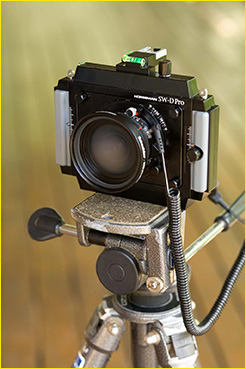
I am always on the lookout for new ways to shoot, and new equipment to allow me to produce higher quality images. I looked at the P25 back a while ago, and whilst using it it stitching mode on a FlexAdapter gave me the file size I was looking for, the fiddly nature of the actual camera more than offset the convenience of digital capture and the prints were similar in overall quality – hence no real gain at significant cost.
You can imagine how interested I was in the P45 back with its 7228×5428 pixel capture in a 36x48mm chip. On paper this should interpolate up to 14000px wide which is the same file dimension as my scans from 6×12 film.
I was also very interested to see the new Horseman SWD which allows the proper use of genuine wide angle lenses with the bigger chips, something that is lacking on the Mamiya and Pentax 645 systems where the widest lens is only 35mm. This version of the camera came with a 24mm Digitar which has the equivalent field of view as about a 17mm lens on traditional 35mm format – very wide indeed.
The camera itself has generous rise and sideways ‘slide’ which means you can not only use it for architectural work but also for lateral stitching. The 24mm does not have a big enough image circle for this so I was not able to test it, but the other lenses in the range, like the 55mm, would be perfect for this and would yield a capture size of about 10000x5000px before any interpolation.
The P45 fits very neatly on the camera and the whole setup fits in the palm of your hand, in fact it is so neat that you could quite feasibly hand-hold it if necessary. The back can be fitted either horizontally or vertically and there is a wide angle viewfinder accessory which unfortunately lacks any masking for different lenses.
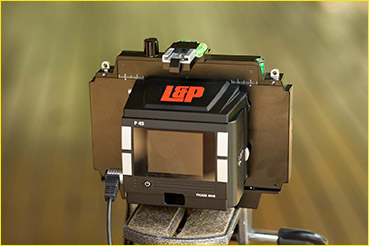
The camera is fairly expensive –Robert Whitein the UK has it listed at GBP1345 plus GBP1985 for the 24mm lens. The other lenses are slightly less but a 2 lens set up will set you back the best part of GBP5000 and you still need a digital back! I am a little puzzled by the pricing of these lenses since the 24mm is ‘only’ about GBP1000 on its own. That makes it GBP985 just for the helicoid lens mount. The 35mm is the same price, GBP1000 for the lens alone, but GBP1475 as a Horseman lens and mount set. Go figure!
Regardless, the SW-D is a lovely camera and is beautifully made. The movements are generous but not geared, using a simple sliding panel with a detent at 10mm in all four directions. Basic but effective.
As far as lens quality is concerned, this is a beauty. The 24mm is crisp right across the frame, even wide open. It has considerable falloff, not surprising when you see just how close the lens rear element is to the sensor plane, but the centre filter takes care of that.
One design problem with extreme wide angles on digital sensors is a colour shift at acute incidence angles. This lens shows a distinct magenta to green shift from the centre to the edge which exaggerates the falloff. Fortunately the Phase One Capture One Pro 3.7.3 software includes a facility for calibrating this hue shift, for each lens and at any movement setting. You simply cover the lens with the white perspex calibration panel and shoot a frame. Import this into CO and under the Colour Balance tab there is an option to Colour Calibrate the lens. You need to do this for different light sources and for each lens, but the software corrects for colour shifts and a bit of falloff. It works well in practice and is a snap to actually do.
How good is the sensor? Very, very good.
Clean captures with sensational resolution – the image looks sharp at 100% on screen with no sharpening applied in CO. I don’t know if there is an anti-aliasing filter, I suspect not. I do see a certain amount of what is becoming known as the ‘painterly effect’ typical of CO processed RAW images. There is a subtle ‘blobbiness’ (for want of a better word) in fine detail and the overall feel is quite ‘digital’. If I was doing big prints I would be tempted to add a bit of noise to mask this but in prints up to A1 it is probably unnecessary.
A few months back Michael wrote about theCambo Wide DSand used in on his Antarctic expedition. I though the camera looked a bit big and clumsy hung around MR’s next but then it is designed for 4×5 shooting. MR calls it the worlds most expensive P+S.
Move over Cambo – the Horseman has wider lenses and is much smaller, about the same size as my old D60! Plus, it’s even more expensive, hooray! With the P45 back you are looking at almost GBP25,000 for one camera and lens – that’s well over US40,000. Phew.
And do you know what? Yes, it is superb quality. Yes, it is very easy to use and shoot with and Yes, it is very compact. BUT it is not comprehensively ‘better’ than 4×5 film, a format that has successfully been used in the most demanding situations by the most demanding photographers. The images are simply different and anyone who has been critically comparing digital capture with equivalent film captures over the years will know that the ‘look’ is subtly different between the two methods.
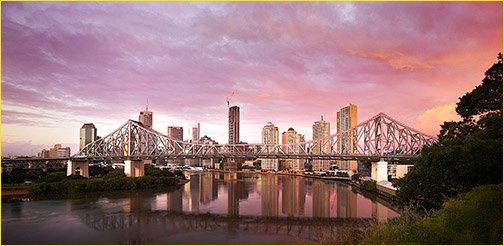
Brisbane Skyline
The digital back picks up lovely subtle highlights and colours – this image could be printed up to 40” wide with sensational results.
The field of view is slightly wider than the 58mm lens on the 6×12 back on my camera.
The P45 image is super-clean with shadow detail well past Velvia (I have not tried Astia but I suspect the P45 would still hold better, and more importantly, cleaner shadows). The image also looks sharper and there is a danger in over sharpening the images simply because you can. The film does still have the edge when it domes to fine detail, it can resolve more than the digi back can – but only just.
This is apparent from examination under a loupe but without using the best possible scanner I doubt that this detail can be successfully translated to a tiff file. I have a Flextight Photo, I don’t have access to a Flextight 848 so it is possible that the scans would get at that fine detail at 8000dpi as opposed to the 3200dpi of my scanner. Even so, when compared to a digital capture, film look simply ‘milky’ with a subtle diffusion of detail, or a lack of local contrast.
So, whilst the back cannot resolve the fine detail that 4×5 film can, the detail it does resolve is so much cleaner that the image looks ‘better’ – up to a point.
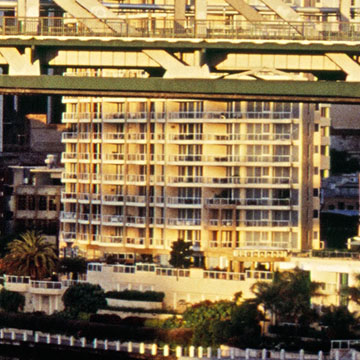
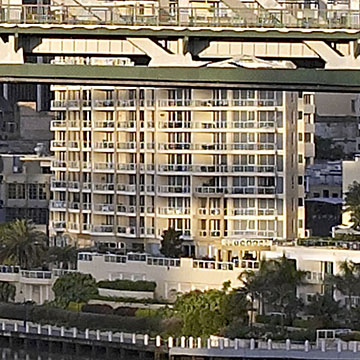
100% crops of the two formats, the P45 image has been interpolated up exactly 200% in CO to make the file dimensions about the same as from the film scan.
Thus 100% view comparison are meaningful. Both images have been sharpened as though for printing on inkjet.
I didn’t bother to match the colours, the film is distinctly warmer but the colour management for the P45 is still not finalized so this difference is meaningless.
A digital capture by such a high quality back as the P45 will look appreciably better in print sizes up to about 40” x 30” – a significant print. The clarity and accutance of the capture will dominate any lack of superfine detail that the film may have picked up and this will certainly show up in a print of this size. I have made tests of this by printing 8x10s of sections of my test shots and the difference is marked.
However, in larger print sizes the clarity of the digital image does not surpass its slight lack of fine detail and the attempt by the software to create this detail shows up badly as a smudging or blobby look. Film on the other hand shows this detail, just, and in big sizes the overall result is subjectively more satisfying to look at.
One thing that is certainly significant, apart from image quality is the sheer expense of the P45. This is an issue for everyone, unless you really can comfortably splash out 40 Big Ones.
There are three main factors concerning cameras – the Three Cs – Cost, Convenience and Quality. Each comes at the expense of the other two in a kind of triangular trade-off.
MyEbonypretty much matches the P45 in Quality, and so I am trading off Convenience for Cost. I put up with the fiddly nature of 4×5 cameras and save myself about US30,000, which is not insignificant. I could spend that money shooting new images and it would go a long, long way.
I would rather see this quest for mega pixels coming to an end. How many photographers genuinelyneeda digital back that will do 30×40 inch prints? Certainly not general commercial studios where much of the work is reproduced no bigger than A3+. Certainly not portrait and wedding shooters, and medium format style cameras are not that good for wildlife. That leaves landscape photographers, who generally shoot 6×12, 6×17 or 4×5 as their main format, selling fine art limited edition prints. Yes, they need superior quality, no question there, but selling prints is a hard business to succeed in and whilst I do know some photographers who could afford this sort of gear, they would only be buying it because theycan, not because this equipment necessarily gives them an edge in their business.
What I would like to see is some more usability in these expensive backs. The preview screen on the P25 was appalling, my old Canon S30 has a better screen. The P45 looks exactly the same – it is gritty, low contrast and not bright enough for full daylight. There are no custom colour temp settings, a fiddly zoom function and a hard to read histogram. When you look at the back of a Canon 5D and see how bright the screen is you wonder where all the money went – evidently not a cent was spent on improving the screen.
So, Phase One and others, please let’s see a move away from more and more pixels at such staggering cost, let’s see somevaluefor a change and some improvements in features. This little camera I hold in my hand is possibly the most expensive production stills camera ever made. It is a marvel of technology, the image quality is amazing and I really enjoyed using it. On the other hand I get a sense of ‘we did it because we could’, the goal being the most pixels at any cost. Reality check please!
But that’s only me. If you want “The Best” then this is it. If you can afford it, then you will thoroughly enjoy this camera and back – right now there is nothing better save for even larger format film…5×7…10×8…..
February, 2006
________________________________________________________________________
Nick Rains
Nick Rains has been photographing landscapes all over the world since leaving University in 1983. In 1986 he spent a year in Perth, Western Australia covering the Americas Cup for a variety of International
magazines such as Yachting World, London Times, and Boat International. Images from this event also appeared in Sports Illustrated, Stern, Paris Match, Regatta and many other well known publications. Over the last 15 years Nick has traveled the length and breadth of Australia covering over 300,000km in his search for fine "Australian" images for the stock photography market. He makes his home in Brisbane, Queensland. Nick is now concentrating on photographic books of his favourite places, the latest project, "Australia’s Hidden Places" will be published by Penguin Books in late 2006. In between outback trips Nick shoots commercial and stock photographs at home and overseas as well as operating his Rainspirit Gallery in the centre of Brisbane. You may also wish to visit Nick’s Web Site, or contact him by e-mail (rains@nickrains.com).

